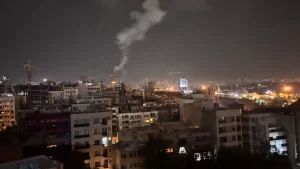
In the 2026-27 period, approximately 42% of soldiers retiring from the first batch of Agniveers are expected to secure positions in various government roles. This is in addition to the 25% of Agniveers who will continue their service in the Indian Army.
The remaining 75% who are not selected for the army will primarily find employment within various ministries of the central and state governments. Notably, Air Chief Marshal Amar Preet Singh has indicated that the Indian Air Force (IAF) is contemplating the absorption of more than the initially planned 25% of Agniveers.
The first batch of Agniveers, which is anticipated to total around one lakh soldiers, will complete their four-year service by 2026-27. Of this group, 25,000 will transition into regular army roles, while approximately 31,500, or 42% of the remaining 75,000, will be placed into government service across a range of ministries.
The long-term objective, as stated by a Home Ministry official, is to find employment for 100% of Agniveers after their four-year service, with the initial phase aimed at 42%.
Launched on June 15, 2022, the Agniveer scheme allows young soldiers to serve in the Indian armed forces for four years. At the conclusion of their service, 25% are selected for regular military roles, while the remainder are transitioned out, with opportunities for employment in government and private sectors.
Air Chief Marshal Amar Preet Singh has expressed optimism about the Agniveer initiative, particularly regarding the IAF’s potential to absorb more than 25% of retiring Agniveers, pending government approval. He highlighted the IAF’s positive outlook on the program, which may facilitate greater integration of Agniveers into the air force beyond the initially established threshold.
Officials from the Home Ministry have confirmed that Agniveers transitioning into government roles will receive a lump-sum retirement payout after their four-year term. Once employed in government positions, these soldiers will earn salaries and allowances according to the norms of their respective departments.
To optimize the placement of retiring Agniveers, the government plans to establish dedicated units within each ministry. These units will assess the educational qualifications and skill sets of the Agniveers to ensure they are matched with suitable roles within government departments. This strategic approach aims to maximize the effective utilization of their expertise.
Additionally, state governments are encouraged to accommodate as many Agniveers as possible. A central government official noted that age relaxation criteria for hiring Agniveers into government roles will remain in effect, facilitating their integration into regular government service.
The Agniveer scheme is designed to support large-scale employment following military service, with the government focused on ensuring a smooth transition for retiring Agniveers into civilian life. This initiative not only aids in soldier resettlement but also enhances various government sectors by introducing a disciplined and skilled workforce.







